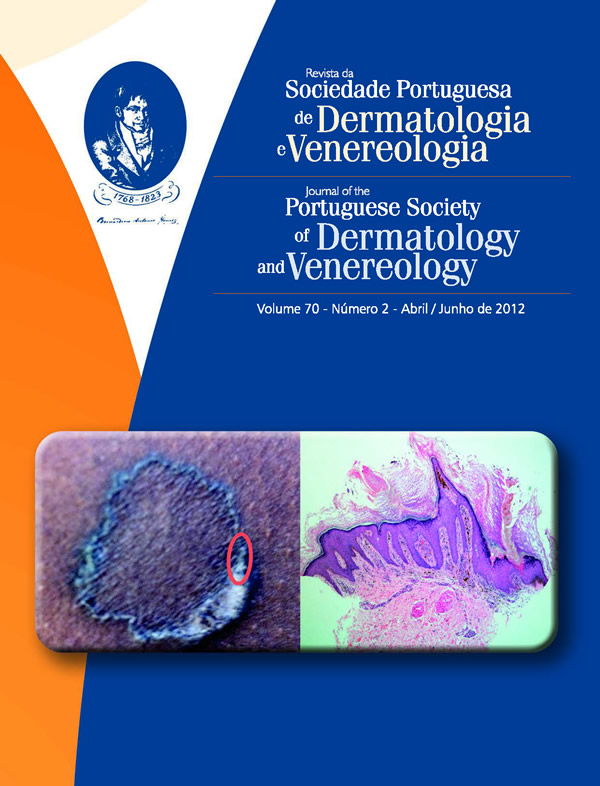PIODERMA GANGRENOSO ASSOCIADO A HEPATITE C CRÓNICA TRATADO EFICAZMENTE COM ETANERCEPT
Resumo
Introdução: O pioderma gangrenoso (PG) é uma dermatose neutrofílica, ulcerativa, recorrente e de etio-patogenia desconhecida.
Caso clínico: Homem, de 43 anos, ex-toxicodependente e portador de hepatite C crónica, observado por quadro clínico com 6 meses de evolução, caracterizado por úlceras dolorosas, de fundo supurativo e necrótico, localizadas nos membros inferiores e em áreas de picadas por agulha. Colocou-se como principal hipótese de diagnóstico o PG, tendo o exame histológico do bordo da lesão demonstrado alterações compatíveis com o mesmo. A avaliação imagiológica e laboratorial evidenciou apenas alterações relacionadas com a doença hepática crónica. Foi submetido, em momentos diferentes, a tratamentos com corticóides sistémicos, ciclosporina, dapsona e talidomida, sem resposta satisfatória. Após introdução do etanercept, verificou-se remissão completa do quadro. Doze meses após introdução do anti-TNF-α, o doente encontra-se sem lesões cutâneas, alterações hepáticas relevan- tes ou elevação da carga viral.
Conclusão: O etanercept mostrou-se ser uma alternativa eficaz e segura.
PALAVRAS-CHAVE – Pioderma Gangrenoso; Hepatite C Crónica; Talidomida; Corticóides; Etanercept.
Downloads
Todos os artigos desta revista são de acesso aberto sob a licença internacional Creative Commons Attribution-NonCommercial 4.0 (CC BY-NC 4.0).








